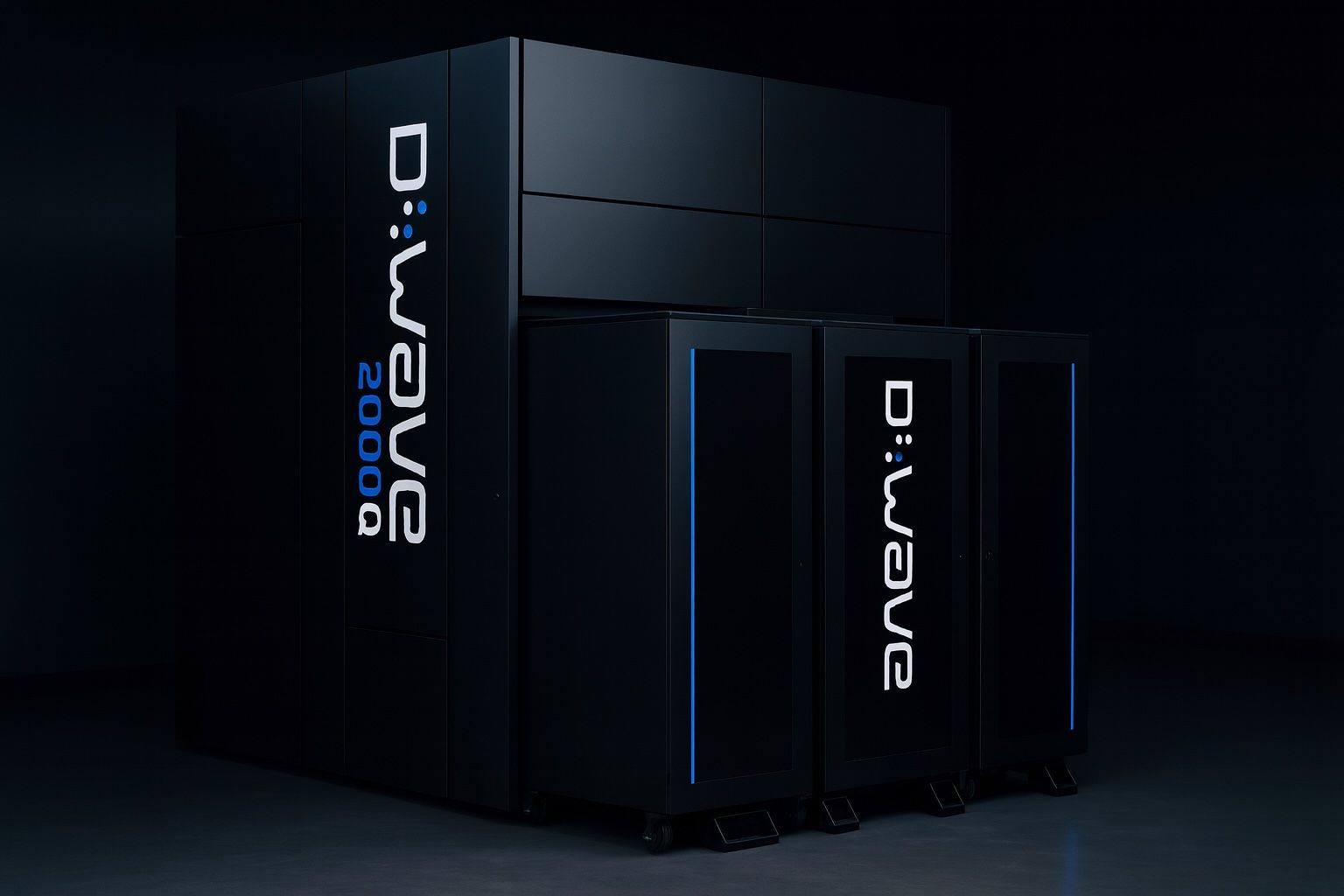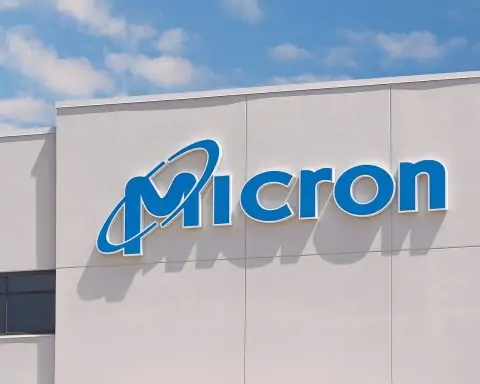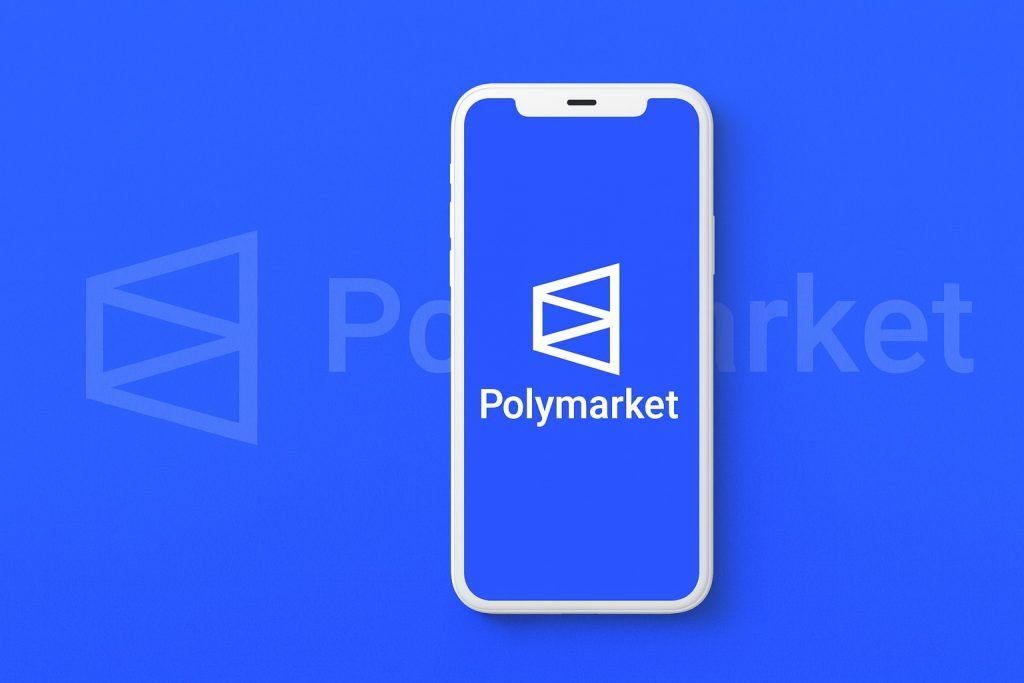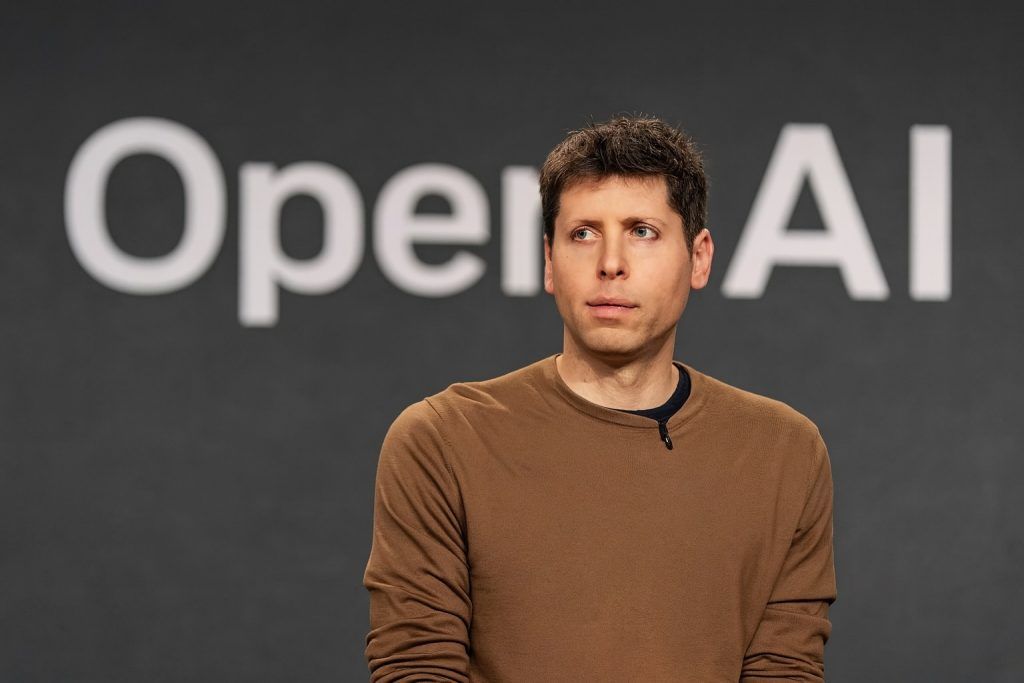- Parabolic Stock Surge: D-Wave Quantum Inc. (NYSE: QBTS) shares hit an all-time high of about $33 in early October 2025, closing at $32.70 on Oct 3 (up ~12% that day) [1]. The stock has climbed roughly +289% year-to-date and an astonishing 3,000%+ over the past 12 months [2], multiplying over 30-fold from about $1 a year ago. Its market capitalization now hovers around $10–11 billion [3] despite very modest revenues.
- Recent Financials: In Q2 2025, D-Wave reported revenue of $3.1 million (up 42% year-over-year) [4]. First-half 2025 revenue jumped to $18.1 million – +289% vs H1 2024 [5] – aided by a large ~$15M system sale in Q1 [6]. Gross margins are high (~82%), but the company remains unprofitable with heavy R&D spending. The Q2 net loss was ~$167M (GAAP), largely due to non-cash warrant liabilities from its SPAC merger, while the adjusted loss was a much smaller ~$0.08 per share [7] [8]. Crucially, D-Wave bolstered its balance sheet via a $400M at-the-market stock offering in Q2, ending the quarter with a record $819M cash reserve [9] [10] – giving it a multi-year runway to fund growth.
- Real-World Quantum Breakthroughs: Investor excitement is fueled by tangible use cases. In a recent pilot with North Wales Police (UK), D-Wave’s hybrid quantum computing system optimized police vehicle deployment, cutting a complex planning problem from “four months to four minutes” and slashing average emergency response times by ~50% [11]. D-Wave’s CEO Alan Baratz hailed it as proof that “hybrid-quantum computing can offer the speed, precision and intelligence needed to identify optimal officer placements…[and] is beginning to show real-world potential” [12]. Such concrete results have bolstered the credibility of quantum computing tech in practical applications.
- Business Momentum: D-Wave is rolling out new technology and partnerships. In mid-2025 it launched its 6th-generation Advantage2 quantum annealer, with 5,000+ qubits and up to 400× speedups on certain problems vs. its prior model [13]. The company signed strategic agreements globally – e.g. a memorandum with Yonsei University in South Korea to install an Advantage2 system [14], and engagements with firms like E.ON, GE, Nikon, NTT, Sharp, and Oxford University on quantum use cases [15]. D-Wave has also collaborated on projects in logistics and manufacturing; for instance, a project with Ford’s Turkey division (Ford Otosan) used quantum optimization to cut vehicle production scheduling time by 85% [16] [17]. These developments suggest D-Wave is beginning to convert decades of R&D into commercial activity.
- Analyst Sentiment & Risks: Wall Street coverage is surprisingly bullish for such an early-stage firm. As of early October, 11 analysts rate QBTS a “Buy” vs only 1 Hold/Sell, with an average 12-month price target around $22–$23 [18] [19]. (Several firms recently hiked their targets into the high-$20s or low-$30s [20].) However, after the stock’s meteoric rise to ~$30+, even supportive analysts urge caution. The consensus target in the low $20s is ~40% below the current price [21], reflecting valuation concerns. D-Wave’s market cap (~$12B) means it trades at roughly 400–500× 2025 sales [22] – a rich valuation that prices in significant future growth. Commentators note the quantum computing sector remains “highly speculative” [23]. The big question: can D-Wave justify the hype by rapidly growing its revenue and eventually narrowing losses? The market outlook is optimistic but tempered by the understanding that quantum computing is still in its infancy commercially.
Stock Price & Financial Performance (October 2025)
D-Wave’s stock has been on a remarkable tear in 2025, making it one of the year’s standout performers. After trading in the mid-$20s in September, QBTS shares rocketed to new heights in early October. On Friday, Oct 3, 2025, the stock hit an intraday high around $33.28 before closing at $32.70 [24] – a one-day jump of ~12% and a fresh record. Year-to-date, the stock is up roughly +289%, and astonishingly it has soared over 3,000% from a year ago [25]. To put that in perspective, D-Wave was a penny stock near $1 in late 2024; by October 2025 it was above $30 [26]. Such explosive growth is virtually unheard of outside of speculative arenas like crypto, underscoring both the euphoria around quantum tech and the risk of volatility [27] [28].
Trading momentum has been intense. Volume spiked to ~77 million shares on Oct 3 alone [29], and technical indicators like RSI flashed “overbought.” Some analysts even speculated that if the rally’s momentum persists, QBTS could reach the $40+ range in the near term [30]. Indeed, one analysis projected a potential ~$41 price based on the current trend [31]. However, the rapid ascent also raises the possibility of sharp pullbacks. The stock’s climb has been fueled by buzz and headlines (discussed below), even as skeptics point out that valuation has become stretched relative to fundamentals.
From a financial performance standpoint, D-Wave is still a nascent revenue generator with significant losses – a classic early-stage tech profile. Quarterly revenue remains very small: in Q2 2025 (April–June), D-Wave had $3.1 million in revenue [32], roughly equivalent to a small software startup’s sales. Even so, this represented a +42% increase from Q2 2024 [33], reflecting early growth. More striking, due to an unusually large contract in Q1, D-Wave’s first-half 2025 revenue totaled $18.1 million, up 289% year-over-year [34]. (By comparison, H1 2024 revenue was only ~$4.6M [35] [36].) The huge jump was driven by at least one large upfront system sale recognized in Q1 (~$15M) [37] – likely the delivery of a new Advantage2 quantum computer to a customer. This highlights that D-Wave’s revenue can be “lumpy,” combining steady cloud-service fees with occasional big hardware deals. Even with this growth, full-year 2025 revenue is forecast at only ~$25 million [38], so D-Wave’s current market value implies investors are pricing in years of exponential growth ahead.
On the profitability side, like its peers, D-Wave operates deep in the red. The company is heavily investing in R&D and ecosystem building, far outpacing its meager revenue. D-Wave’s GAAP net loss in Q2 2025 was about $167 million [39] – an enormous loss relative to $3M in sales. However, much of this was due to one-time, non-cash accounting items (revaluation of SPAC-related warrants) [40]. Excluding those unusual charges, the adjusted loss was around $0.08 per share [41] (amounting to a few tens of millions of dollars in core operating loss). This adjusted figure gives a more reasonable picture of ongoing cash burn. The key point: D-Wave, like virtually all quantum startups, is not expected to turn a profit for the foreseeable future. Investors are currently tolerating losses as the company races to advance its technology and win customers, but eventually the path toward breakeven will be an important benchmark.
Importantly, D-Wave shored up its balance sheet this year. Through a large at-the-market equity offering (taking advantage of rising share prices), D-Wave raised about $400 million in Q2 2025, swelling its cash reserves to $819 million by mid-2025 [42]. This is an unusually large cash pile for a company of D-Wave’s size – in fact, one of the biggest war chests among quantum pure-plays. With over $800M in cash, D-Wave has ample runway to fund its operations and research for several years if needed [43] [44]. Management indicated this capital will support accelerated R&D, potential strategic acquisitions, and general growth initiatives [45]. The flip side is that issuing new shares diluted existing shareholders (increasing the share count substantially) [46]. However, given the subsequent stock surge, even the new investors who came in via the ATM offering have seen gains. The cash cushion significantly reduces bankruptcy risk in the near term and gives D-Wave time to execute its roadmap without needing immediate profitability. In short, the company’s financial profile is high growth, high loss, but high liquidity – a classic story of investing now for a hoped big payoff later.
Recent News (Early October 2025)
D-Wave has dominated tech stock headlines in early October 2025, driven by both company-specific news and broader quantum industry buzz. Here are some of the key recent news items:
- Oct 7, 2025 – Showcasing Quantum at LA Tech Week: D-Wave and the University of Southern California Bring Quantum Computing to LA Tech Week – D-Wave announced a series of quantum-focused events as part of Los Angeles Tech Week [47]. The company and USC’s Viterbi School are offering guided lab tours of D-Wave’s Advantage™ quantum annealer (notably, the first commercial quantum computer installed in Los Angeles) [48]. Events during Oct 14–17 will include expert panels, hackathons, and demos aimed at raising awareness of quantum computing advancements. This collaboration highlights D-Wave’s outreach and education efforts as it builds a community of developers and users.
- Oct 3–4, 2025 – Stock Soars on Police Pilot Success: D-Wave Quantum Soars to New High on Real-World Quantum Computer Significance – Going into the first week of October, D-Wave’s stock spiked after news that its technology achieved a remarkable real-world result in the UK. A joint project with North Wales Police demonstrated that D-Wave’s hybrid quantum-classical approach could optimize police vehicle deployments, cutting solution times from months to minutes and halving emergency response times [49] [50]. This announcement, made around Sept 30 and widely reported by Oct 3, was seen as a validation of quantum computing’s practical value. Investors piled in on Oct 3, driving QBTS to record highs on heavy volume. D-Wave’s CEO called the pilot a “meaningful impact” example, emphasizing that “hybrid-quantum computing is beginning to show real-world potential across private and public sectors” [51]. The positive media coverage of this story added fuel to the rally [52].
- Oct 2, 2025 – Quantum Sector Rally (Rigetti Deal): D-Wave’s surge coincided with a broader “quantum stock frenzy.” On Oct 2, peer company Rigetti Computing announced a sale of two of its new “Novera” quantum computers for ~$5.7 million [53], signaling that paying customers are emerging for quantum hardware. Rigetti’s stock (RGTI) jumped ~18% on that news [54], and other quantum players like IonQ (IONQ) and Quantum Computing Inc. (QUBT) saw sympathy gains. This sector-wide momentum spilled over to D-Wave. Investors viewed Rigetti’s deal (hardware revenue in the pipeline) and D-Wave’s police project as jointly indicating that commercial traction is picking up in quantum computing [55] [56]. Adding to the exuberance, industry buzz from events like Nvidia’s fall GTC conference gave quantum a spotlight – Nvidia’s executives had been publicly upbeat on recent quantum progress, further fanning optimism in the first week of October [57].
- Other Recent Developments: In late September, D-Wave also announced new customer orders and partnerships that contributed to positive sentiment. For example, media reports noted D-Wave secured orders for new quantum systems (the details were sometimes conflated with Rigetti’s news in sector reports) and highlighted upbeat comments from partners. One piece pointed out that D-Wave’s stock was up over 3,000% year-on-year, while cautioning that the entire quantum space is “highly speculative” despite the excitement [58] [59]. Additionally, on Oct 6, analysts and commentators debated the sustainability of these gains – a MarketBeat report titled “Behind D-Wave’s Massive Week (And Why Rivals Also Popped)” noted the stock’s ~22% jump in just a few days and discussed whether an ETF approach might be safer than individual stocks given the volatility [60] [61].
In summary, early October 2025 was a whirlwind for D-Wave: a confluence of a major real-world use-case success, sector-wide good news, and investor FOMO propelled the stock upward. D-Wave’s name was in many headlines, from press releases about tech demos in LA to finance columns marveling at the quantum computing rally. This media blitz has helped drive public awareness of D-Wave, but it also raises expectations that the company will need to continue delivering substantive progress to sustain its valuation.
Business Developments and Partnerships
Beyond the stock hysteria, D-Wave has been steadily advancing its technology roadmap and forging partnerships to commercialize quantum computing. 2025 has seen several notable business developments:
- New Quantum Hardware (Advantage2): In mid-2025, D-Wave launched its latest generation quantum annealing computer, dubbed Advantage2. This 6th-gen system boasts over 5,000 qubits and improvements in coherence and connectivity. In certain benchmark problems (like route optimization), Advantage2 has demonstrated up to 400× faster performance compared to D-Wave’s previous model [62]. The company claims Advantage2 is a significant step toward its long-term goal of 100,000-qubit systems by decade’s end [63]. By focusing on quantum annealing (which is well-suited for optimization tasks), D-Wave is carving a niche in delivering practical solutions for specific problem domains even before fault-tolerant gate-model quantum computers arrive. The Advantage2 rollout has been accompanied by cloud availability via D-Wave’s Leap platform, and at least one of these new machines was sold/installed in Q1 2025 (driving that quarter’s big revenue spike) [64].
- Strategic Partnerships & Customers: D-Wave has actively pursued partnerships across industry and academia to expand its ecosystem. A noteworthy collaboration is with Yonsei University in South Korea – D-Wave signed an MOU to install an Advantage2 system at Yonsei’s campus [65], marking the first D-Wave quantum computer in that region. This aligns with D-Wave’s strategy to place machines with partners globally (North America, Europe, and now Asia) to spur local research and business use. On the commercial side, D-Wave has engaged a number of Fortune 500-level companies in exploratory projects. In recent press materials the company cited new or expanded work with firms including E.ON (energy), GE and Nikon (manufacturing), NTT and Sharp (tech), and even Oxford University on research applications [66]. Many of these are early-stage or pilot projects, but they indicate broad interest from diverse sectors in trying out quantum solutions. Each successful case study can help validate D-Wave’s value proposition. For example, D-Wave worked with Ford Otosan (Ford’s Turkish JV) on a manufacturing optimization problem – using quantum algorithms to reduce vehicle production scheduling from 30 minutes to under 5 minutes (an ~85% time reduction) [67]. Similarly, D-Wave has mentioned projects in airline scheduling, logistics, and financial modeling in the past. These partnerships not only provide (small) revenue and feedback for D-Wave, but also serve as marketing proof-points that quantum computing “works” for real business tasks.
- Real-World Application Wins: Perhaps the most PR-worthy development has been D-Wave’s focus on real-world use cases to silence skeptics who say quantum computing is purely theoretical. The collaboration with North Wales Police is a prime example, yielding a 50% improvement in emergency response times by optimizing officer allocation with D-Wave’s hybrid solver [68]. This project was the first publicized instance of a police force using quantum computing to impact operations, and it generated significant media buzz (and likely more inbound inquiries from government agencies) [69] [70]. D-Wave also previously worked with Save-On-Foods, a Canadian grocery chain, to optimize grocery distribution routes, and with DHL on warehouse logistics – illustrating quantum’s potential in supply chain optimization. Each such win builds D-Wave’s credibility beyond the lab. As CEO Alan Baratz put it, these projects show that quantum can deliver “faster, more efficient outcomes than classical methods” in certain domains, providing an “early glimpse of quantum’s real-world potential” [71]. The company’s aim is to transition customers from pilot experiments to recurring usage (either via cloud access or eventually purchasing systems).
- Funding and Corporate Moves: On the funding front, aside from the $400M ATM raise, D-Wave did not announce traditional venture rounds in 2025 (having gone public via SPAC in mid-2022). However, it’s worth noting that D-Wave’s public listing gave it access to capital that some competitors lack. The recent share price surge, albeit speculative, has put D-Wave in a position to tap equity markets again if needed (as it did with the ATM offering). So far, management appears confident they have sufficient cash for now. There is also an ongoing SPAC-era legal matter: like many post-SPAC companies, D-Wave faces shareholder litigation regarding its merger (some law firms have advertised investigation of D-Wave, with an Oct 7, 2025 deadline for investors to join a lawsuit) – a reminder of the risks and scrutiny around such speculative stocks. On a brighter note, D-Wave has been investing in developer tools and its Leap quantum cloud service, which now offers access to D-Wave machines over the internet. Leap has seen over 200 million problems run to date [72], and D-Wave regularly updates its Ocean SDK to help programmers formulate problems for the quantum annealer. All these efforts aim to lower the barrier for organizations to experiment with quantum solutions, hopefully seeding future demand.
In summary, D-Wave is vigorously working to turn its pioneering technology into a viable business. The launch of improved hardware (Advantage2) and the securing of marquee partners/customers show progress in the “commercialization of quantum computing” – a phrase long met with skepticism. D-Wave’s strategy appears to be: prove value through targeted optimization use cases now (leveraging annealing where it excels), build a developer community via cloud access, and keep advancing the tech so that when the quantum market truly matures, D-Wave will have a first-mover advantage in know-how, client base, and even physical deployed systems. It’s a bold plan that still faces many technical and market adoption hurdles, but 2025’s developments indicate meaningful steps toward making quantum computing useful outside of laboratories.
Broader Quantum Computing Industry Context
D-Wave’s story is part of a larger quantum computing gold rush unfolding in 2025. After years of being niche science projects, quantum tech companies have captured investor imagination recently – leading to dramatic stock rallies across the sector. D-Wave is one of only a handful of publicly traded pure-play quantum computing firms, alongside competitors like IonQ and Rigetti Computing (and smaller peers such as Quantum Computing Inc.). Each of these companies has a different technical approach and niche, and all are racing toward the promise of quantum breakthroughs.
IonQ (NYSE: IONQ), which focuses on trapped-ion gate-model quantum computers, has seen its stock skyrocket even more in absolute terms than D-Wave’s. IonQ shares recently hit around $75 (in early Oct 2025) – up roughly 700% year-over-year – giving IonQ a market cap over $20 billion, roughly double D-Wave’s valuation [73] [74]. IonQ is viewed as a leader in pursuing general-purpose, error-corrected quantum computing, and it made waves by announcing ambitious plans to build quantum systems with 80,000 logical qubits by 2030 (aided by its $1 billion+ acquisition of UK-based Oxford Ionics) [75]. In Q2 2025, IonQ’s revenue was $20.7M [76] – much higher than D-Wave’s $3.1M, yet still tiny relative to its valuation – and it remains unprofitable as well. IonQ’s success in the market shows the high optimism for gate-model quantum tech (which in theory can eventually solve a wider range of problems than D-Wave’s annealers). However, IonQ’s timeline for truly useful, large-scale quantum computers stretches into the late 2020s, meaning investors are similarly betting on future potential.
Rigetti Computing (NASDAQ: RGTI), a smaller player using superconducting gate-model qubits (similar to approaches by Google and IBM), has likewise enjoyed a stunning stock resurgence. Rigetti’s shares were penny-stock level in 2024 but have jumped on the quantum bandwagon, delivering a 2,500%+ gain in the past year [77] [78]. By early October 2025 Rigetti’s market cap reached ~$10 billion, in the same ballpark as D-Wave [79]. Notably, Rigetti’s Q2 revenue was just $1.8M [80] – even less than D-Wave’s – underscoring that all these companies are pre-revenue in the grand scheme. Rigetti did show technical progress with a recent multi-chip quantum processor achieving improved fidelities, and it secured that $5.7M sale of two small “Novera” systems (to be delivered in 2026) [81] [82]. That deal was one of the first public multi-million dollar sales of quantum hardware, hinting that government or corporate customers are beginning to invest actual dollars (not just research time) in quantum technology. In essence, Rigetti, like D-Wave, is trying to prove it can convert R&D into revenue, and the market is rewarding any signs of traction.
Even legacy tech giants are part of this narrative. Companies such as IBM, Google, Microsoft, and Amazon have large quantum R&D programs (IBM and Google have built advanced superconducting quantum processors; Microsoft and Amazon offer cloud-based quantum services and invest in novel approaches). These giants aren’t pure quantum plays (so their stocks don’t hinge on quantum news), but their involvement adds credibility and competition to the field. For instance, IBM’s latest 127-qubit and 433-qubit processors and Google’s quantum error-correction experiments are pushing the envelope in gate-model tech, while D-Wave remains unique in having a commercially available annealing-based system. NVIDIA, a semiconductor powerhouse, is also closely watching quantum computing’s rise – CEO Jensen Huang recently said quantum computing is nearing an “inflection point” and could start solving important problems within a few years [83]. (Nvidia has even launched tools to help quantum researchers, like a platform to simulate quantum circuits on GPUs [84].) Such statements from industry leaders suggest a broader belief that the quantum era is on the horizon, even if significant engineering challenges remain.
The broader context is that quantum computing in 2025 sits at the crossroads of excitement and uncertainty. On one hand, consulting firm McKinsey projects the quantum computing market could grow from roughly $4 billion in 2024 to $72 billion by 2035 as the technology matures [85]. Governments are also investing – e.g., the EU, U.S., China and others have committed large funding for quantum research, and as noted in an industry update, the Danish government backed a new €300M quantum research fund in late September [86]. These suggest a huge potential market and supportive tailwinds. On the other hand, current quantum hardware is still relatively primitive: qubit counts are limited, error rates are high (except in D-Wave’s annealing approach which sidesteps some error issues by focusing on optimization), and useful “quantum advantage” over classical methods has been demonstrated in only very specific cases. All pure-play companies are burning cash and will need the market to materialize in time to justify their valuations. Investors are effectively betting on technology roadmaps – that D-Wave will scale annealers to larger problem sizes, that IonQ will achieve error-corrected gate systems, etc. – rather than current financials.
For now, the quantum computing stock frenzy resembles past hype cycles in other emerging industries (AI, electric vehicles, biotech): a few early winners capturing imagination and seeing their stock prices balloon far ahead of fundamentals. As one Fast Company piece quipped, some once-tiny quantum stocks have leapt by triple or quadruple digits percentage-wise in a “quantum gold rush” [87] [88]. But history teaches that not all will live up to the lofty promises. D-Wave, IonQ, and Rigetti are all in a race not just against each other, but against the clock – they need to advance the tech and build a sustainable business model before competition (and physics limitations) catches up or investor patience runs out. In the meantime, the excitement around quantum continues to draw interest, and D-Wave stands as a pioneering figure in this high-stakes endeavor.
Market Outlook and Stock Forecasts
The massive rally in D-Wave’s stock has naturally led to intense debate over its future trajectory. Bulls argue that we are at the dawn of a quantum revolution and that D-Wave’s first-mover advantage in commercial quantum computing justifies a premium valuation. Bears (or realists) counter that the stock has run far ahead of itself given the tiny revenues and ongoing losses, making a pullback likely. What do the experts and analysts predict from here?
Wall Street Analyst Targets: Despite D-Wave’s speculative nature, many analysts initiated coverage in 2023–2025 as the company went public and started reporting results. As of early October 2025, the consensus on Wall Street is cautiously optimistic but not to the degree of the current price. According to MarketBeat and other aggregators, 11 analysts rate QBTS a Buy and 1 rates it Hold/Sell [89]. Price targets have been rising alongside the stock, but are still mostly below the trading price. The average 12-month target is around $20–$23 per share [90] – roughly 30–40% lower than mid-30s where the stock recently traded. For example, Piper Sandler raised its target from $13 to $22 in August after D-Wave’s strong Q2 results, maintaining an Overweight rating [91]. Benchmark and Stifel initiated coverage in mid-2025 with targets in the mid-20s [92]. And just days ago, B. Riley, Needham, and Cantor Fitzgerald were reported to have reiterated bullish outlooks, some upping targets into the high-20s or low-30s [93]. In fact, B. Riley’s analyst Craig Ellis highlighted quantum’s rapid progress toward real commercial applications, calling the sector “rapidly advancing toward integrated capability and commerciality” – a key reason behind his firm’s bullish stance [94] [95]. If one takes the high end of recent targets (around $30–$33), it suggests some analysts see further upside only if D-Wave executes well. However, essentially all targets have now been met or exceeded by the stock’s latest surge [96], which is causing a bit of anxiety even among bulls.
Market Observers and Media: Financial commentators have pointed out that D-Wave’s valuation implies extreme optimism. For instance, at ~$30+ per share, D-Wave’s market cap (~$12B) is about 400-500 times its expected 2025 sales [97]. A MarketBeat analysis noted the company’s price-to-sales ratio near 502 and stated flatly that “there is a strong argument that D-Wave is significantly overvalued” at current levels [98]. The same piece emphasized that despite supportive analyst ratings, the consensus target just above $20 is far below the trading price, indicating Wall Street’s models don’t justify the rally entirely [99]. In other words, expectations may have gotten ahead of reality. Publications like Fast Company and Insider Monkey have also struck a cautious tone: even while marveling at D-Wave’s 30-fold stock increase and real technical achievements, they label the quantum stock boom as “highly speculative” and remind readers that these companies are unproven in business terms [100] [101]. Some have drawn parallels to past bubbles. A Wall Street Journal piece (titled “The Hidden Cost of Playing the Stock Market’s Slot Machine”) cited the quantum computing rally as an example of risky, hype-driven trades [102] [103].
Growth Outlook: Looking ahead, what might justify D-Wave’s valuation? Analysts bullish on D-Wave typically point to its technology pipeline and the expanding quantum market. D-Wave itself forecasts accelerating adoption of its quantum cloud services and potentially more system sales. For 2025, revenue is estimated around $24–25 million [104] (which assumes Q3 and Q4 bring in slightly higher sales than Q2’s $3.1M). If D-Wave were somehow to maintain H1’s momentum, full-year revenue could surprise to the upside – but that may depend on closing another big deal. Beyond 2025, projections are highly speculative, but some models foresee D-Wave doubling or tripling revenue annually for a few years (from a low base) if the industry growth kicks in. For instance, if D-Wave could reach ~$100M revenue by 2026–27 (a big if), the stock’s forward price-to-sales multiple would start to normalize somewhat [105]. Bulls argue that the company’s ~$800M cash hoard gives it a chance to acquire complementary tech or make investments to speed up revenue growth [106]. There is also the prospect of government contracts: quantum computing is of strategic interest, and governments might fund deployments (which appears to be happening indirectly in cases like the police pilot and possibly the Yonsei installation). Any announcement of sizable government funding or contracts could be a catalyst.
On the other hand, skeptics note that rich valuations leave little room for error. D-Wave will likely need to raise more cash in a few years (once that $800M begins to dwindle), which could dilute shareholders further – unless by then the company has substantial revenue to attract non-dilutive financing. The timing of quantum tech adoption is uncertain; if progress stalls or if a better technology (say, a breakthrough by Google or a startup) overtakes D-Wave’s approach, the market’s sentiment could swing wildly. It’s worth noting that D-Wave’s annealing machines, while useful for optimization, cannot run all types of quantum algorithms – some analysts think truly revolutionary quantum applications will require gate-model quantum computers with error correction (an area where IonQ or others aim to lead). If annealing hits a performance wall, D-Wave is also developing a gate-model program (they have mentioned working on gate-model qubits in the lab) [107], but that is in very early stages and behind the leaders.
Stock Forecast – Volatility Ahead: Most experts foresee that D-Wave (and quantum stocks generally) will continue to be volatile. The near-term stock trajectory could hinge on a few key events: D-Wave’s next earnings report (Q3 2025) is due in mid-November, and investors will watch closely for any uptick in customer count, backlog, or revenue guidance [108]. If D-Wave shows sequential growth or new deals, it might support the bulls’ case. Conversely, any disappointment (e.g. flat QoQ revenue or lack of new contracts) could trigger a sharp correction, given the lofty expectations priced in. Additionally, further analyst revisions or coverage initiations will be telling – if more banks come out with say $30+ targets, that could lend credence to the rally; if downgrades or cautious initiations emerge, that might cool enthusiasm. It’s also possible we see secondary effects: the stock is heavily owned by retail traders and momentum funds right now, so changes in risk appetite (due to macro events or sector rotation) could cause big swings unrelated to D-Wave’s own news.
In summary, the market outlook for D-Wave’s stock is a tug-of-war between long-term vision and short-term valuation concerns. Optimists see quantum computing as a once-in-a-generation technological revolution – and D-Wave as a uniquely positioned pioneer that could be “the next NVIDIA” if quantum becomes as transformative as AI. They argue that traditional valuation metrics don’t fully apply during this hyper-growth, pre-profit phase (just as Amazon in the late 90s or Tesla in its early days defied conventional metrics for years). Pessimists (or perhaps prudent realists) counter that plenty of revolutionary technologies have taken far longer to monetize than expected, and some early leaders faltered along the way. For now, consensus advice from analysts leans positive on D-Wave’s fundamentals and execution – they applaud the technical milestones and strategy – but many also warn investors about the frothy stock price and recommend sizing any investment accordingly (or even taking some profits). The next 6-12 months will be crucial in determining if D-Wave can grow into its valuation or if gravity will bring this high-flyer back down to earth.
Expert Commentary and Insights
Industry experts and financial analysts have been weighing in on D-Wave’s prospects, often in colorful terms. Here are a few notable insights from thought leaders and observers:
- Financial Analysts Bullish, But Realistic: Craig Ellis, an analyst at B. Riley Financial, has been upbeat on the quantum sector. He noted that quantum technology is “rapidly advancing toward integrated capability and commerciality,” implying that real commercial integration of quantum solutions may be near [109]. This optimism underpinned B. Riley’s decision to reiterate a Buy rating and raise price targets (for both D-Wave and peers). Similarly, analysts at Needham, Stifel, and Benchmark have highlighted D-Wave’s first-mover advantage in selling quantum computers and its robust cash position, which together give it a chance to capture early market share. Piper Sandler’s team, after Q2 2025, emphasized D-Wave’s better-than-expected revenue growth and said the company is executing well on expanding usage of its systems – hence their target hike to $22 [110]. However, even bullish analysts inject caution. A common refrain is that quantum computing is not yet a proven business. As Zacks Investment Research currently rates it “Hold,” citing the ongoing losses and nascent revenue as reasons to be cautious [111]. Many analysts explicitly warn that quantum stocks could be “long-term winners but short-term rollercoasters” – suitable only for risk-tolerant investors who believe in the technology.
- Quantum Scientists and Tech Leaders: From the technology side, leaders in computing acknowledge the promise of quantum but also its challenges. NVIDIA’s CEO Jensen Huang has publicly said that we are nearing an “inflection point” in quantum computing where useful applications will emerge, comparing the state of quantum now to where AI was a decade ago [112]. (Notably, Nvidia is providing software tools and even specialized hardware to support quantum developers.) On the other hand, Huang also tempered expectations by suggesting truly general-purpose quantum computers might still be more than 10 years away in his view [113] – showing even experts have mixed timelines. IBM’s quantum researchers often point out that error correction is the key hurdle; until that’s solved, quantum advantage will be limited. This context is relevant for D-Wave: its annealing approach doesn’t directly compete on error-corrected algorithms, but IBM’s and Google’s progress in gate-model quantum could eventually encroach if they achieve large, stable qubit counts. Industry veterans thus sometimes view D-Wave as an interesting “right now” solution (solving specific optimization problems today), whereas IonQ, Google, etc. are aiming for the “ultimate” solution of a universal quantum computer tomorrow. Both approaches have merit, and some experts believe a hybrid future is likely – where companies use annealers like D-Wave’s for certain tasks and gate-model qubits for others. As one researcher quipped, “D-Wave’s machines are the best we have today for certain problems, but we’ll need the IBMs and IonQs of the world for problems we want to solve tomorrow.” This underscores that D-Wave’s current tech may fill a niche, but the company will need to keep innovating (including pursuing gate-model tech itself) to remain a leader a decade from now.
- Investors and Commentators: High-profile investors in disruptive tech have also chimed in. Some venture capitalists call quantum computing the “next space race”, predicting that a few winners could dominate a trillion-dollar industry in 20 years. Cathie Wood of ARK Invest, known for backing futuristic tech, has mentioned quantum computing as part of the innovation landscape (though ARK’s funds have been cautious so far, given the early stage). Traditional fund managers, however, express concern. One portfolio manager told Barron’s that quantum stocks remind him of 1999 dot-coms: “great story, tiny revenue – you just hope you’re not the one left holding the bag when the bubble pops”. That sentiment was echoed in the Wall Street Journal, which recently noted that many retail investors flocking to quantum stocks may not fully grasp the timeline and risks (e.g., dilution, technical setbacks) [114]. In contrast, quantum insiders (scientists and entrepreneurs) often push back on the bubble narrative, arguing that quantum tech has crossed a threshold where it’s no longer science fiction. They point to the fact that real applications – like D-Wave’s police pilot or IBM’s small-scale quantum advantage demonstrations – are happening now, suggesting we’re at the start of the S-curve of adoption.
- D-Wave Management’s View: D-Wave’s executives, for their part, strike an upbeat but measured tone. CEO Alan Baratz frequently emphasizes “value today, vision tomorrow.” He highlights how hundreds of users are solving problems on D-Wave’s systems right now – over 200 million problems solved to date on the company’s quantum computers, spanning traffic flow optimization, factory scheduling, protein folding, etc [115]. Baratz’s take is that we don’t have to wait for perfect error-corrected quantum computers to get benefits; there is value in deploying “practical quantum applications” immediately for certain use cases. In an interview, he noted that for problems like logistics, scheduling, and optimization, D-Wave’s annealer can complement classical computing and deliver speedups or better solutions, as seen with customers like Save-On-Foods and the police project. However, Baratz also acknowledges challenges: he admits the need to educate the market, to prove ROI for customers, and to keep advancing the hardware (they plan a series of upgrades culminating in a 7000+ qubit Advantage2 in 2026, and a next-next-gen with even higher performance). He also is transparent that D-Wave’s gate-model quantum program is in early R&D – meaning the company is effectively hedging its bets by working on both approaches (annealing and gate model) as the industry evolves [116]. The management’s stance is that D-Wave aims to be “the quantum computing company” that offers solutions across the spectrum, and they frequently mention they are the only company building both annealing and gate-model quantum computers [117].
Overall, the expert commentary around D-Wave and quantum computing reflects a mix of excitement, hope, and caution. There is a palpable excitement that quantum technology is finally yielding real outcomes – something D-Wave’s recent stories exemplify. There’s hope (especially among investors and futurists) that companies like D-Wave could become the next giants if quantum computing revolutionizes industries from finance to pharma. But there’s also caution from seasoned voices who have seen hype cycles before – they remind everyone that breakthrough tech often takes longer and profits come later than initially thought. For the informed public and investors, the takeaway is to stay grounded: D-Wave Quantum Inc. is at the cutting edge of a potentially world-changing technology, making it a thrilling company to watch (or own in a portfolio), yet it operates in an arena with high uncertainty. As one financial blogger wrote, “Invest in the quantum future, but buckle up for a wild ride” – a sentiment that nicely encapsulates the current state of D-Wave and its quantum compatriots [118] [119].
Sources:
- D-Wave Quantum Inc. press releases and financial statements [120] [121] [122]
- Tech industry analysis – TS2 Technology (Tech Space 2.0) articles on D-Wave’s stock surge, financials, and partnerships [123] [124] [125] [126]
- InsiderMonkey News – D-Wave Quantum Soars on Real-World Significance (Oct 4, 2025) [127] [128]; includes CEO quote on police project
- MarketBeat Report – Behind D-Wave’s Massive Week (And Why Rivals Also Popped) (Oct 6, 2025) [129] [130]
- Yahoo Finance/Business Wire – D-Wave and USC Bring Quantum Computing to LA Tech Week (Oct 7, 2025) [131]
- Fast Company via Yahoo Finance – Quantum computing stocks are leaping again (Oct 3, 2025) [132] [133]
- McKinsey & Co. – Quantum industry forecast (2024–2035) [134]
- Analyst commentary: Piper Sandler, B. Riley, Needham (via Nasdaq/Intellectia) [135] [136]; Zacks and MarketBeat consensus data [137].
References
1. ts2.tech, 2. ts2.tech, 3. ts2.tech, 4. ts2.tech, 5. ts2.tech, 6. ts2.tech, 7. ts2.tech, 8. ts2.tech, 9. ts2.tech, 10. ts2.tech, 11. ts2.tech, 12. ts2.tech, 13. ts2.tech, 14. ts2.tech, 15. ts2.tech, 16. ts2.tech, 17. ts2.tech, 18. ts2.tech, 19. finviz.com, 20. ts2.tech, 21. finviz.com, 22. ts2.tech, 23. ts2.tech, 24. finviz.com, 25. ts2.tech, 26. ts2.tech, 27. ts2.tech, 28. ts2.tech, 29. ts2.tech, 30. ts2.tech, 31. ts2.tech, 32. ts2.tech, 33. ts2.tech, 34. ts2.tech, 35. ts2.tech, 36. ts2.tech, 37. ts2.tech, 38. ts2.tech, 39. ts2.tech, 40. ts2.tech, 41. ts2.tech, 42. ts2.tech, 43. ts2.tech, 44. ts2.tech, 45. ts2.tech, 46. ts2.tech, 47. www.stocktitan.net, 48. www.stocktitan.net, 49. finviz.com, 50. finviz.com, 51. finviz.com, 52. ts2.tech, 53. ts2.tech, 54. ts2.tech, 55. ts2.tech, 56. finviz.com, 57. ts2.tech, 58. ts2.tech, 59. ts2.tech, 60. finviz.com, 61. finviz.com, 62. ts2.tech, 63. ts2.tech, 64. ts2.tech, 65. ts2.tech, 66. ts2.tech, 67. ts2.tech, 68. ts2.tech, 69. ts2.tech, 70. ts2.tech, 71. ts2.tech, 72. ts2.tech, 73. ts2.tech, 74. ts2.tech, 75. ts2.tech, 76. ts2.tech, 77. ts2.tech, 78. ts2.tech, 79. ts2.tech, 80. ts2.tech, 81. ts2.tech, 82. finviz.com, 83. thequantuminsider.com, 84. blogs.nvidia.com, 85. ts2.tech, 86. finviz.com, 87. ts2.tech, 88. ts2.tech, 89. finviz.com, 90. ts2.tech, 91. ts2.tech, 92. finviz.com, 93. ts2.tech, 94. ts2.tech, 95. ts2.tech, 96. ts2.tech, 97. ts2.tech, 98. finviz.com, 99. finviz.com, 100. ts2.tech, 101. finviz.com, 102. finviz.com, 103. finviz.com, 104. ts2.tech, 105. ts2.tech, 106. ts2.tech, 107. www.businesswire.com, 108. finviz.com, 109. ts2.tech, 110. ts2.tech, 111. ts2.tech, 112. thequantuminsider.com, 113. www.constellationr.com, 114. finviz.com, 115. ts2.tech, 116. www.businesswire.com, 117. www.businesswire.com, 118. finviz.com, 119. finviz.com, 120. ts2.tech, 121. ts2.tech, 122. www.businesswire.com, 123. ts2.tech, 124. ts2.tech, 125. ts2.tech, 126. ts2.tech, 127. finviz.com, 128. finviz.com, 129. finviz.com, 130. finviz.com, 131. www.stocktitan.net, 132. ts2.tech, 133. ts2.tech, 134. ts2.tech, 135. ts2.tech, 136. ts2.tech, 137. finviz.com







